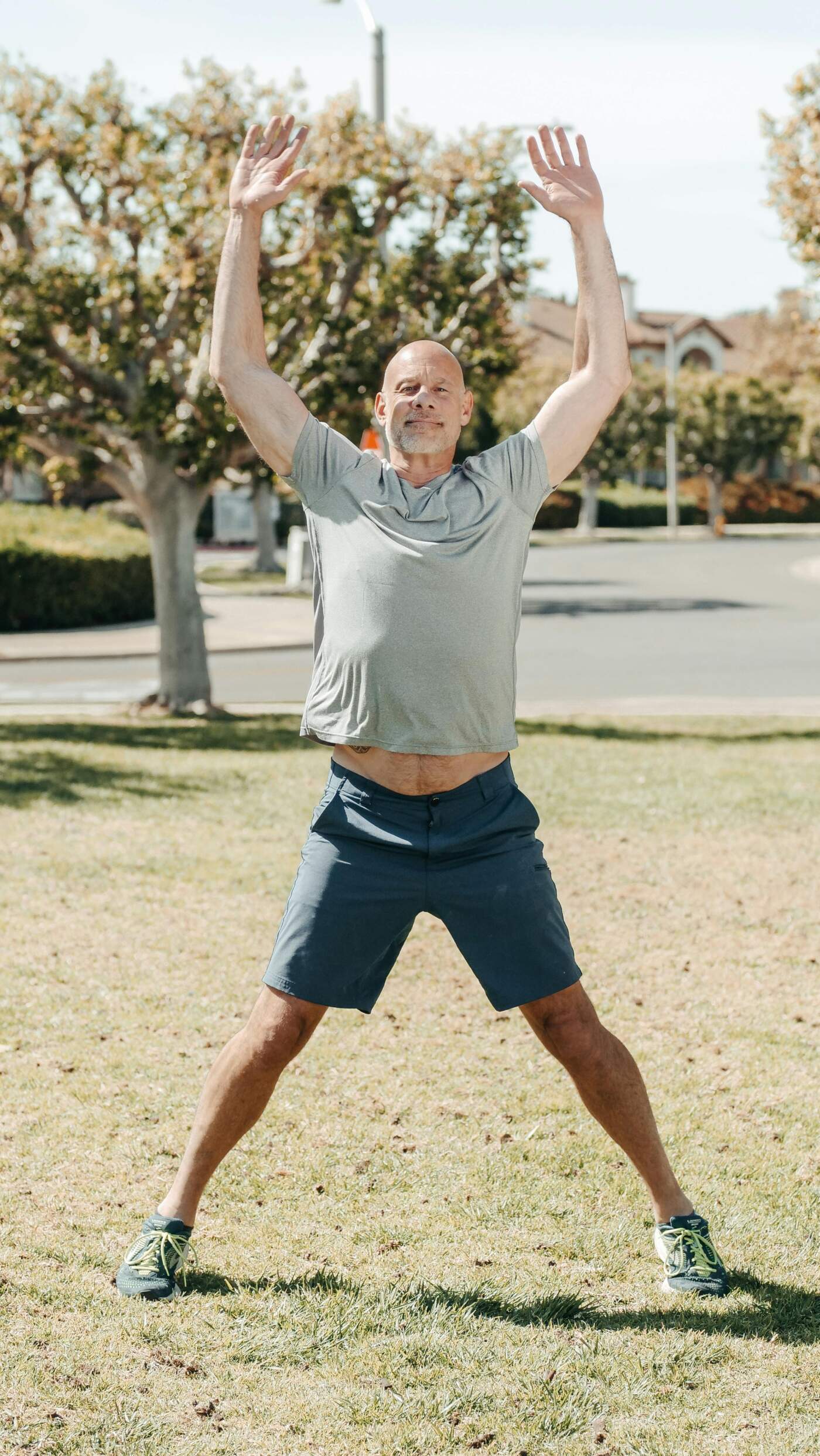The proper rules for doing jumping jacks and their benefits– Jumping jacks are an efficient total-body workout that you can do almost anywhere. This exercise is part of what’s called plyometric, or jump training. Plyometric is a combination of aerobic exercise and resistance work. This type of exercise works your heart, lungs, and muscles at the same time.
Specifically, jumping jacks work your:
- glutes
- quadriceps
- hip flexors
Jumping jacks also involve your abdominal and shoulder muscles.
Read on to learn more about the benefits of jumping jacks and how to incorporate them into your exercise routine.
What are the benefits?
Plyometric exercises, like jumping jacks, are intended to help people run faster and jump higher. That’s because plyometrics work by rapidly stretching the muscles (eccentric phase) and then rapidly shortening them (concentric phase).
Other examples of plyometric exercises:
- burpees
- squat jumps
- box jumps
- lunge jumps
Jumping jacks can be a good alternative to logging miles on a treadmill or stationary bike. All of these exercises help get your heart rate up, but jumping jacks help you move your body out of its normal plane of motion.
By taxing the muscles in this way, the movement can become more explosive, gaining both strength and agility for sports that require versatile movements.
Jump training can also be good for bone health. In one study, rats were put on a jumping exercise regimen for eight weeks (200 jumps per week and 40 jumps per day for five days).
Their bone density was measured before and after the jumping procedure and showed significant gains over the control group. The rats were able to maintain these gains over a 24-week period by training for 11 percent of the initial test period (21 jumps per week).
Regular exercise in general can also provide the following benefits:
- weight management
- reduced blood pressure
- reduced low-density lipoprotein (LDL) cholesterol, the “bad” cholesterol
- increased high-density lipoprotein (HDL) cholesterol, the “good” cholesterol
- increased insulin sensitivity
What about calories burned?
A 150-pound person doing just a single two-minute session (approximately 100 repetitions) of jumping jacks may burn around 19 calories. Doing jumping jacks for a total of 10 minutes broken up in spurts throughout the day would burn 94 calories total.
Are there any risks?
Jumping jacks and other plyometric exercises are associated with an increased risk of injury, particularly to lower body joints such as knees and ankles. As with most exercises, the risks are high if you don’t start with a base level of strength and conditioning.
If you have joint problems, muscle injuries, or other health concerns, check with your doctor before starting such a program.
Most people can safely perform plyometric exercises like jumping jacks. These include child, adolescent and elderly trusted source athletes.
Jumping jacks and pregnancy The American College of Obstetricians and Gynecologists (ACOG) recommends pregnant women get 20 to 30 minutes of moderate-intensity activity per day during all trimesters of pregnancy. ACOG notes that exercise helps maintain physical fitness, maintain a healthy weight, and may even reduce your risk of developing gestational diabetes.
While ACOG doesn’t specifically say not to do jumping jacks, they do list “low-impact” aerobics as a safe alternative to high-impact sports like gymnastics. Talk to your doctor about the types of exercise you can do during the different trimesters of pregnancy.
If you had a complicated pregnancy and did regular jumping jacks before getting pregnant, talk to your doctor for guidance on whether to continue. Pregnancy affects your joints and balance, so proceed with caution.
Some women may be able to safely continue vigorous exercise until after delivery with clearance from their doctor. It’s especially important to be okay with vigorous exercise during the second and third trimesters.
The key is to pay attention to your body and adjust accordingly based on any pregnancy complications and your doctor’s recommendations.
Rules for doing jumping jacksRules for doing jumping jacks

If you’re new to exercise, it’s a good idea to discuss a plan with your doctor. Start slow, and keep your repetitions and sets short to begin with. You can always increase as your fitness improves.
Basic Jumping Jack
Photography by Active Body. Creative mind

Start with your legs straight and your arms at your sides.
Jump up and spread your feet hip-width apart and bring your arms above your head, almost touching.
Jump up again, lowering your arms and bringing your legs together. Return to your starting position.
Rotation jack
The rotary jack is another variation you can try to increase intensity:
Start by standing with your feet together and your hands on your chest.
Jump up and land on your feet in a squatting position. Your feet should be wider than shoulder-width apart and your toes should be turned in.
As you land in this squatting position, rotate your upper body at the waist and reach your left hand toward the floor. At the same time, reach your right hand to the sky.
Return to your starting position.
Repeat on the other side to complete one repetition.
Low impact jumping jack

For a gentler alternative, Chicago-based celebrity trainer Andrea Metcalfe suggests trying low-impact jumping jacks:
Start by reaching your right arm to the corner of the room as you simultaneously kick your right leg out.
When your right side is in the out position, you reach the corner of the room with your left hand as you simultaneously step your left leg out.
Bring your left arm and leg to center followed by your right arm and leg. This is a repeat.
Continue this marching motion, alternating directions, until you’ve completed 5 repetitions on the right side. Repeat leading with the left.
What about repetition?
There is no standard for how many repetitions or jumping jacks to set. You may want to start with just a few at a low to moderate intensity. Work up to two sets of 10 or more repetitions.
If you’re an experienced athlete or regularly active, you can do 150 to 200 repetitions of jumping jacks and other jumping moves in one session.
Safety Tips
While you don’t need complicated equipment to perform a jumping jack, you should practice some basic safety precautions while doing it. Follow these tips:
Heat and cool. A brisk walk around the block can be a good start.
Do your jumping jack on a flat, even surface. Grass, rubber and other surfaces that absorb shock are preferred over cement or asphalt.
Wear supportive shoes. Choose athletic sneakers instead of sandals, heels or boots.
Learn the correct form. Consider having an instructor show you proper form to make sure you’re doing the moves correctly.
The sooner, the better. Consider speed of repetitions over the total length (endurance) of the workout to avoid overuse injuries.
Pay attention to your body. If you feel pain, take a break or stop your session altogether.
Takeaway
Jumping jacks can help mix up your current exercise or even inspire you to start fresh with a new program. Whatever activity you choose, aim to get a reliable source of at least 30 minutes of moderate-intensity exercise most days of the week
You can do jumping jacks on their own throughout the day or incorporate them into a more varied plyometric routine. It’s a good idea to give your body two to three days of rest between sessions and to mix up the types of exercises you do to avoid overuse injuries.






Leave a Comment